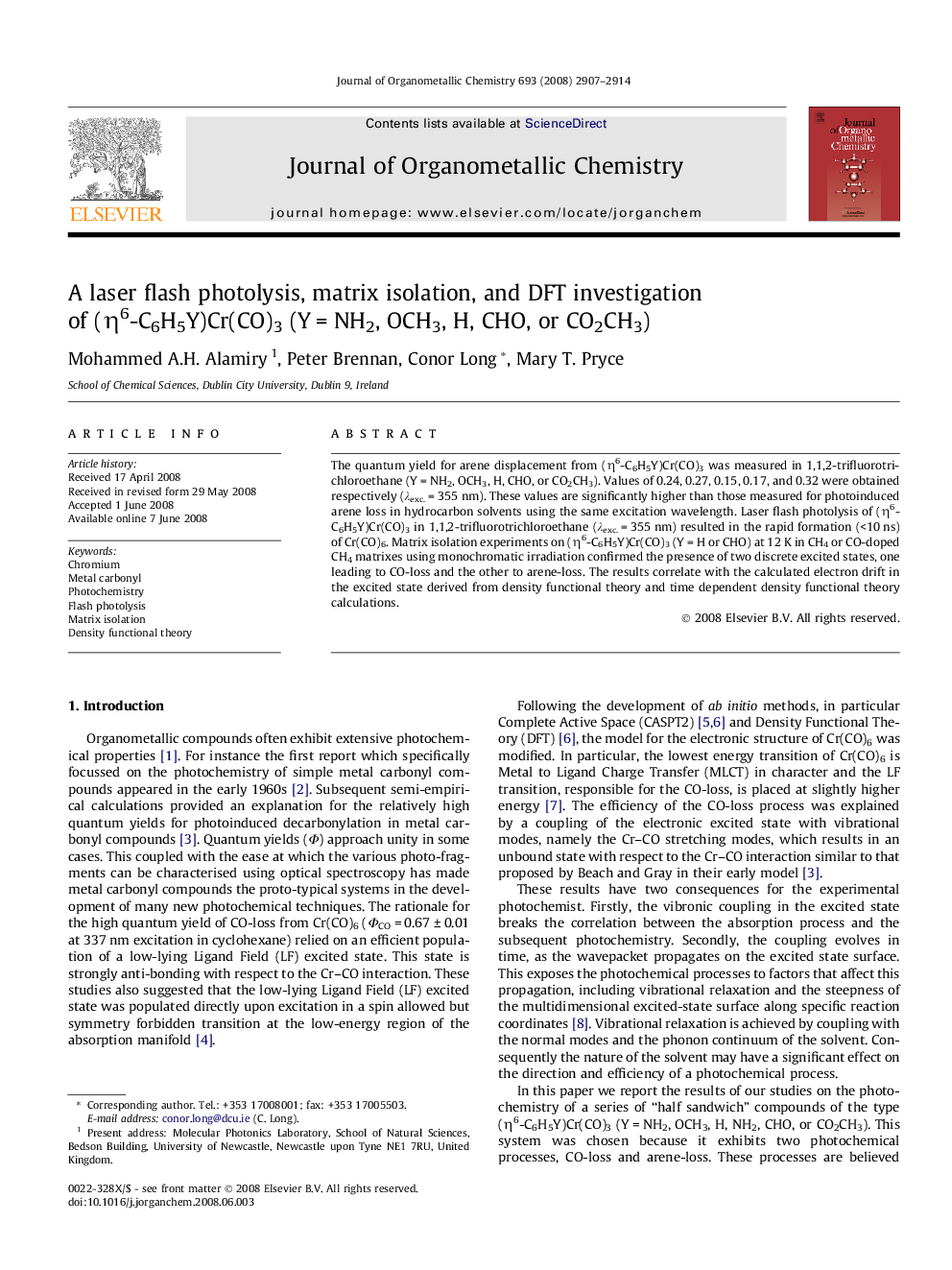| Article ID | Journal | Published Year | Pages | File Type |
|---|---|---|---|---|
| 1327900 | Journal of Organometallic Chemistry | 2008 | 8 Pages |
The quantum yield for arene displacement from (η6-C6H5Y)Cr(CO)3 was measured in 1,1,2-trifluorotrichloroethane (Y = NH2, OCH3, H, CHO, or CO2CH3). Values of 0.24, 0.27, 0.15, 0.17, and 0.32 were obtained respectively (λexc. = 355 nm). These values are significantly higher than those measured for photoinduced arene loss in hydrocarbon solvents using the same excitation wavelength. Laser flash photolysis of (η6-C6H5Y)Cr(CO)3 in 1,1,2-trifluorotrichloroethane (λexc. = 355 nm) resulted in the rapid formation (<10 ns) of Cr(CO)6. Matrix isolation experiments on (η6-C6H5Y)Cr(CO)3 (Y = H or CHO) at 12 K in CH4 or CO-doped CH4 matrixes using monochromatic irradiation confirmed the presence of two discrete excited states, one leading to CO-loss and the other to arene-loss. The results correlate with the calculated electron drift in the excited state derived from density functional theory and time dependent density functional theory calculations.
Graphical abstractPhotoinduced CO-loss and arene-loss from (η6-C6H5Y)Cr(CO)3 (Y = NH2, OCH3, H, CHO or CO2CH3) result from discrete photophysical processes whose efficiency depends on the solvent. The quantum yield (Φ) for arene loss is greater in halocarbon than in hydrocarbon solvents (Φ = 0.17 vs. 0.048 for Y = CHO).Figure optionsDownload full-size imageDownload as PowerPoint slide
